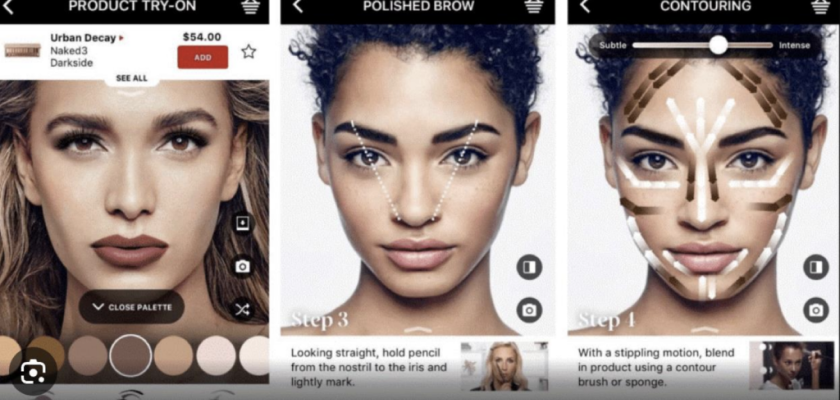Prompt engineering for digital marketing is revolutionizing how businesses engage with their audiences, offering a powerful tool to enhance digital marketing strategies.
If you want to stay ahead of the highly competitive digital age, you need to keep your eyes open for innovative techniques. At this point, prompt engineering, a method of creating and optimizing prompts for AI models, has garnered significant attention.
In this article, I’ll try to explore how prompt engineering can be effectively leveraged for digital marketing, and provide practical strategies and actionable insights to maximize its potential as much as I can.
Ready? Let’s get started!
Understanding Prompt Engineering: What is It?
As I’ve previously mentioned, prompt engineering is the process of designing and refining prompts to improve the performance of AI models, such as ChatGPT and Gemini. These AI models rely on prompts to generate responses, and the quality of these prompts can significantly impact the output. Marketers (like me) need to carefully create prompts to make sure that AI-generated content is relevant, engaging, and aligned with their goals.
The Importance of Prompt Engineering
When it comes to digital marketing, the ability to generate high-quality content quickly is vital, especially in this fast-paced era. Prompt engineering allows marketers to create compelling copy, blog posts, social media posts, and other marketing materials within a click, efficiently. The combination of using well-designed prompts and AI tools for digital marketing agencies can help marketers produce content that resonates with their target audiences, enhance engagement and drive conversions.
Key Components of Prompt Engineering
Prompt engineering involves several key components, including understanding the AI model’scapabilities, identifying the desired outcome, and iterating on prompts to refine results. The process requires a deep understanding of both the AI technology and the specific marketing objectives.

How to Use Prompt Engineering for Your Digital Marketing Needs?
To effectively use prompt engineering for digital marketing, it is crucial to follow a structured approach. The following sections outline the steps involved in leveraging this powerful tool.
1. Identifying Your Marketing Goals
Before creating prompts, it is essential to clearly define your marketing goals. Whether you aim to increase brand awareness, drive website traffic, or boost sales, having a clear objective will guide the prompt engineering process. For instance, if your goal is to improve customer engagement on social media, your prompts should focus on generating interactive and appealing content.
Sephora, a global beauty retailer, aimed to enhance customer engagement on its social media platforms by clearly defining its marketing goals and leveraging AI-driven prompts. The AI-powered chatbot and Sephora Virtual Artist revolutionized the beauty shopping experience with features like virtual try-ons and personalized product recommendations. No doubt that this innovative approach not only boosted customer satisfaction but also drove a remarkable fourfold increase in online sales within six years. Sephora’s journey highlights the importance of early technology adoption, strategic partnerships, and a customer-centric approach to achieving digital transformation success.

2. Creating Effective Prompts
Creating effective prompts involves understanding the language and tone that resonate with your audience. It is important to use specific, clear, and engaging language to resonate the desired response from the AI model.
💡 Tips for Creating Effective Prompts:
- Be Specific: Clearly state what you want the AI to generate.
- Use Conversational Language: Match the tone of your brand to maintain consistency.
- Include Keywords: Integrate relevant keywords naturally to improve SEO and relevance.
HubSpot, a leader in inbound marketing, uses ChatGPT prompts to create personalized email content for its subscribers. By crafting prompts that ask the AI to generate specific marketing tips based on user behavior, HubSpot saw an 82% increase in conversion rates.
The video features Kipp Bodnar and Emmy Jonassen, HubSpot’s CEO and VP of Marketing respectively. They discuss real-world examples of how AI boosted their email campaign results. Together they also explore how AI can segment audiences for targeted emails, personalize content for increased engagement, and leverage data to craft effective messaging. Additionally, they focus on the iterative process of feeding data to AI and testing different approaches, ultimately leading to HubSpot’s impressive conversion rate increase.
3. Testing and Iterating Prompts
Testing and iterating prompts is a critical step in prompt engineering. Marketers can identify which prompts generate the best outcomes, once they experiment with different prompts and analyze the results
Steps for Testing Prompts:
Step #1: Create Multiple Variations: Develop several versions of each prompt.
Step #2: Analyze Results: Evaluate the AI-generated content for quality and relevance.
Step #3: Refine Prompts: Adjust prompts based on feedback and performance metrics.
The New York Times used AI to generate headlines for their articles. They tested various prompts to see which generated the most engaging and click-worthy headlines. Through continuous iteration and analysis, they improved their click-through rates by 15%.
4. Utilizing AI Tools for Marketing Agencies
AI tools for marketing agencies can greatly enhance the prompt engineering process by providing advanced capabilities and insights. Its ability to analyze vast datasets empowers digital marketing agencies to gain deep customer insights, predict trends, and optimize campaigns for maximum impact. From automating routine tasks like social media management and content creation to enabling hyper-personalized marketing experiences, AI is revolutionizing the industry.
Furthermore, AI is enhancing creativity and efficiency across various departments. Design teams can leverage AI-powered tools for generating visuals and optimizing layouts, while AI-driven chatbots provide round-the-clock customer support. As a remarkable result of using AI, marketing agencies can unlock new opportunities, improve ROI, and stay ahead of the competition.
AI is also reshaping the digital advertising landscape, with platforms like Facebook and Google at the forefront of utilizing its potential. By analyzing vast amounts of user data, AI enables precise ad targeting, boosting ROI. Companies that use AI for digital marketing, like Coca-Cola are also taking advantage of AI to automate creative processes, generating logos, text, and ad copy. As AI’s influence grows, we witness a surge in the various examples of the best AI advertising campaigns and demonstrating its transformative power.
5. Monitoring and Analyzing Results
Continuous monitoring and analysis are crucial for the success of AI-generated content. Imagine creating the perfect message for millions of customers. Sounds impossible, right? Not with AI. By feeding AI detailed customer data, marketers can generate highly personalized marketing messages. But it doesn’t stop there. To truly maximize the impact, they need to closely watch how people react.
Key Performance Indicators (KPIs) work as a secret weapon, reporting back on how well their AI-generated messages are performing. Engagement rates, click-through rates, and conversion rates are just a few of the metrics they need to track. These numbers tell them if the customers are pleased with their messages or if they need to hit the drawing board again.
Let’s use a hypothetical example, Nike has been at the forefront of using AI to enhance the customer experience. Their focus on personalized recommendations and product design has set a high standard in the industry.
- Nike Adapt: This self-lacing shoe uses AI to adjust the fit based on the wearer’s foot shape and activity level, providing unparalleled comfort and performance.
- Personalized Product Recommendations: By analyzing customer data, Nike offers tailored product suggestions, increasing customer satisfaction and sales.
- AI-Driven Design: Nike uses AI to analyze trends and consumer preferences, helping designers create innovative and popular products.
Nike’s commitment to AI has not only strengthened its brand but also positioned it as a leader in the sports industry.
Final Notes
The fusion of prompt engineering and AI is ushering in a new era of digital marketing, characterized by efficiency, personalization, and creativity. While the potential is immense, it’s crucial to approach this technology with a strategic mindset. Only if you understand your target audience well, set clear objectives, and iteratively refine your prompts, you can take advantage of the power of AI to drive exceptional marketing results.
As AI technology continues to evolve, so too will the possibilities for prompt engineering. Staying informed about the latest advancements and best practices will be essential for marketers seeking to maintain a competitive edge.
Start exploring the potential of prompt engineering for your digital marketing efforts today. Experiment with different prompts, utilize advanced AI tools, and continuously monitor your results to unlock new opportunities for growth and success.
